"Red Rain" is a film aimed at the 80th Anniversary of the successful August Revolution (August 19, 1945 - August 19, 2025), the National Day of the Socialist Republic of Vietnam (September 2, 1945 - September 2, 2025) and major holidays of the Party, State and Army in 2025.
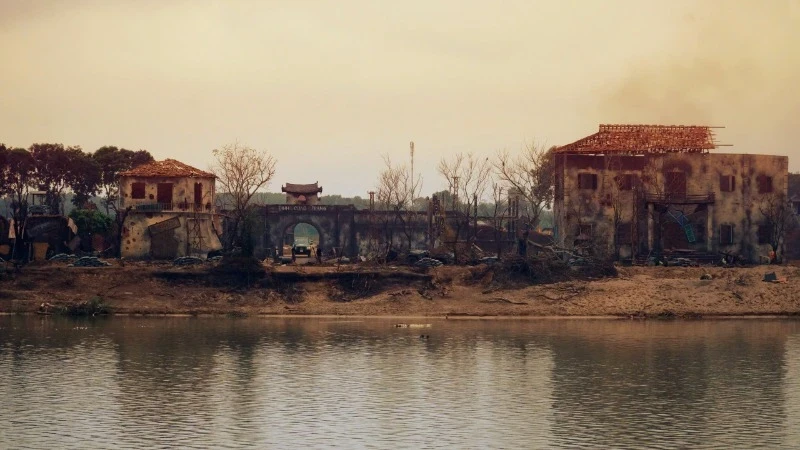
According to Lieutenant Colonel Nguyen Thu Dung - Director People's Army Cinema, Deputy Head of the Steering Committee for the production of the feature film "Red Rain", the work reflects the heroic and resilient fight of the people and officers and soldiers of the Vietnam People's Army during 81 days and nights to protect Quang Tri Citadel; the fierce battle of wits of the Government of the Democratic Republic of Vietnam at the negotiating table at the Paris Conference; denounces war crimes; praises the justice of the struggle to unify the country; the aspiration for peace , independence, and unification; the spirit of national reconciliation and harmony of the Vietnamese people.
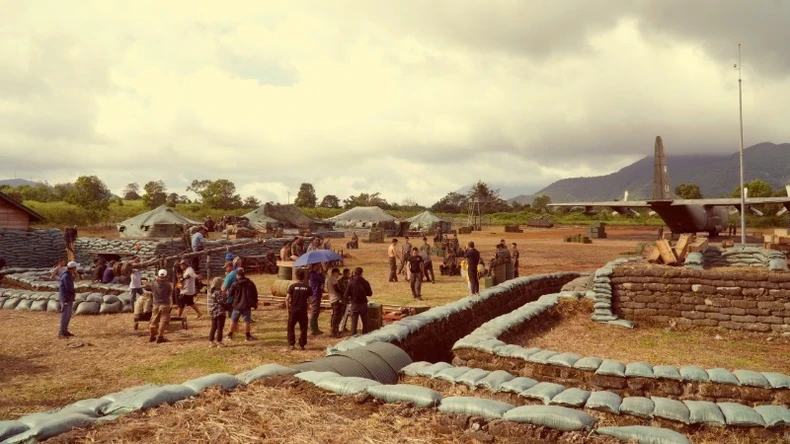
Preparing for the production of a large-scale revolutionary war film is a complex process, requiring close coordination between many different stages, and has been prepared by the unit for many years.
This is a large-scale historical film project about the reality of revolutionary war, reflecting the war to protect Quang Tri Citadel in 1972. The unit surveyed the film setting in more than 10 provinces and cities, selected suitable filming locations, and accurately recreated the historical context.
"Red Rain" is the largest project of the People's Army Cinema in the past 10 years. The script for this feature film was written by writer Chu Lai - an experienced author writing about war.
For the historical realistic film, the People's Army Cinema and the film crew wanted to recreate the most vivid and authentic historical period of the nation's war in the 70s, especially 1972 with 81 historic days and nights in Quang Tri. For that reason, the unit invested in building and meticulously recreating the scene on the set in Quang Tri; mobilizing the participation and coordination of military branches in the army, along with many weapons, equipment, props, and vehicles to serve the filming scene.
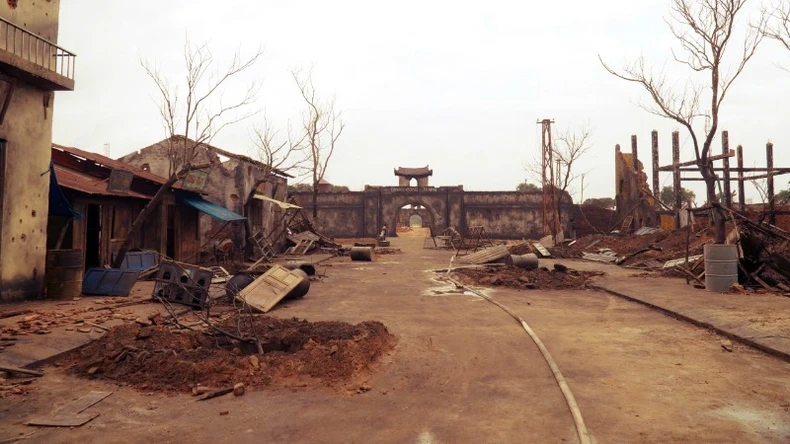
People's Army Cinema also invested time and effort into other scenes of the film, such as: operating room, operating station, train transporting new recruits... According to designer Vu Viet Hung, the team of artists has worked hard to research, paying attention to every detail, the team works enthusiastically, professionally, enthusiastically and passionately with the genre of realistic war films.
Every detail such as the tree roots crawling in the operating room, the mossy walls due to the humid space, the forward operating station hidden under the forest canopy, with simple furniture such as a makeshift first aid bed made of bamboo... all exude the spirit and will of the soldiers of the past.
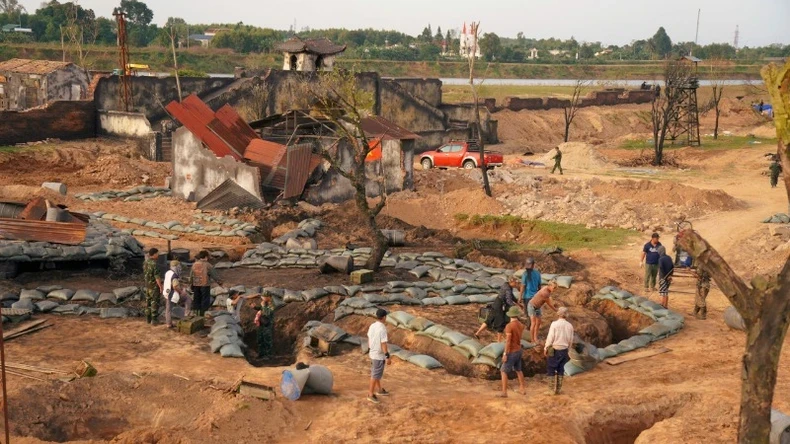
The train cars were also restored and redesigned to match the spirit and historical period. The scenes at the operating room and operating station left the actors and crew with many emotions, because of the authenticity of the setting, which recreated the pain of war, the boundary between life and death, the regret and helplessness of the soldiers when witnessing their comrades sacrificed right in their hands.
In the scenes with the participation of many extras, the film crew received enthusiastic support and help from the people. Many extras were exposed to and witnessed for the first time the spectacular and fierce explosions, the weapons and equipment of the army right before their eyes. In addition to the excitement and curiosity of participating in the film, there was also pride, mixed with emotions about the memories of loss, pain, and separation caused by war, from which each person felt more and more appreciative of the value of peace.
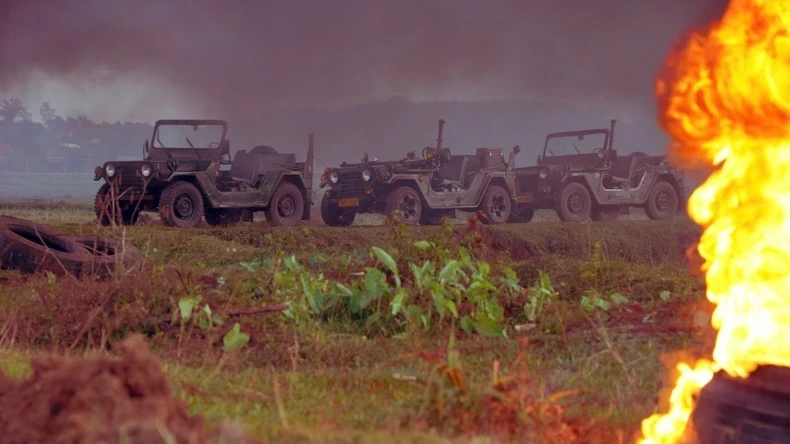
The props of the characters on the other side of the battle line were also painstakingly collected and restored to the smallest detail. Many of the artifacts are precious and are only kept in museums, so to recreate them in the film, the film crew had to replicate them at a 1:1 scale to serve the filming scenes. In addition to ensuring a realistic portrayal of history, the props also have aesthetic value and can also be transformed into a character in the story.
People's Army Cinema is the leading unit in producing films about war and post-war themes, many of which are large-scale and have profound ideological themes, such as: Red Ban Flower, The Fateful Gong, The Returning Person, Rain Song… |
The most special feature of the film is that the set is realistically recreated based on the historical Quang Tri Citadel. The film crew and the team of artists studied the structure of the actual relic, from which they designed the set to ensure it was as close to the original as possible.
From the Dinh Cong Trang citadel gate, the layers of walls, the color of the walls with layers of moss from time, the arrangement of the brick layers as well as the study of the structure of each brick. To ensure the most authentic, the film crew also invited experts, historical researchers and veterans who fought in the Citadel to give suggestions and advice on details during the construction process.
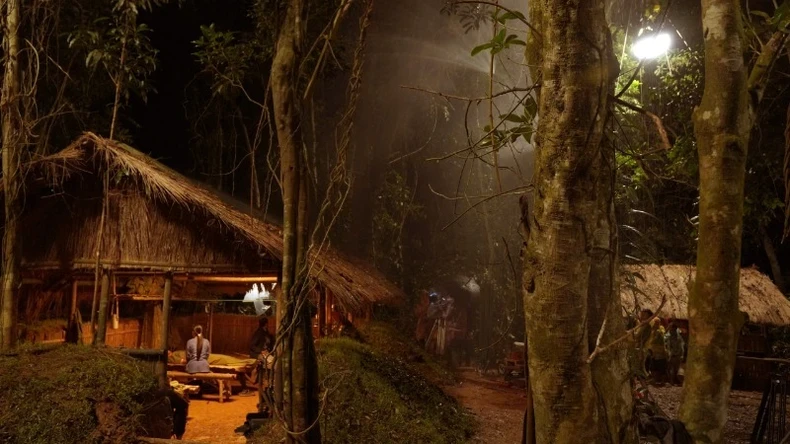
In addition, choosing the setting right on the Thach Han River is also a matter that the People's Army Cinema pondered a lot before making the decision. Building a film studio right next to the historic river is both a tribute to the heroic martyrs, like a stick of incense to send the respect of today's generation for the sacrifices and hardships of our ancestors; and can also take advantage of the historic river to recreate images of the war such as the scene of our soldiers crossing the river, the scene of transferring the wounded in the rain of bombs and bullets... This helps increase the authenticity and emotion when filming, while reducing the cost of designing the scene.
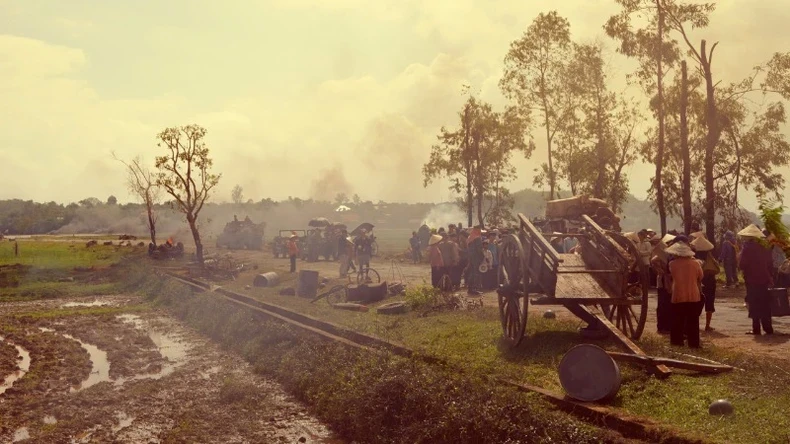
The unit has always received the attention, leadership and close direction of the Chief of the Ministry of National Defense , the Chief of the General Department of Politics, the Film Steering Committee, the coordination and support of military regions, branches, agencies and units inside and outside the army. Along with that is the solidarity and unity in the leadership and command and all officers, employees and soldiers, determined to unanimously identify this as a major and important task of the unit. Accompanying the unit are People's Artists, Meritorious Artists, filmmakers with in-depth experience in production, content and art participating in the film.
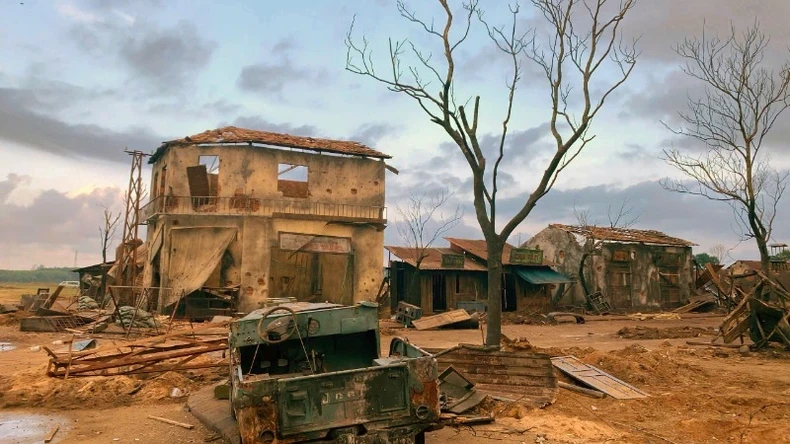
During the production of the film "Red Rain", the unit also encountered many difficulties, such as: the personnel and experience in making large-scale films of the People's Army Cinema were somewhat limited; funding and bidding procedures were complicated, difficult for the specific industry of film production.
Investing in settings, costumes, and props must ensure historical accuracy and aesthetics. Therefore, the unit must collect and consult experts on recreating costumes, weapons, and war props in the correct period.
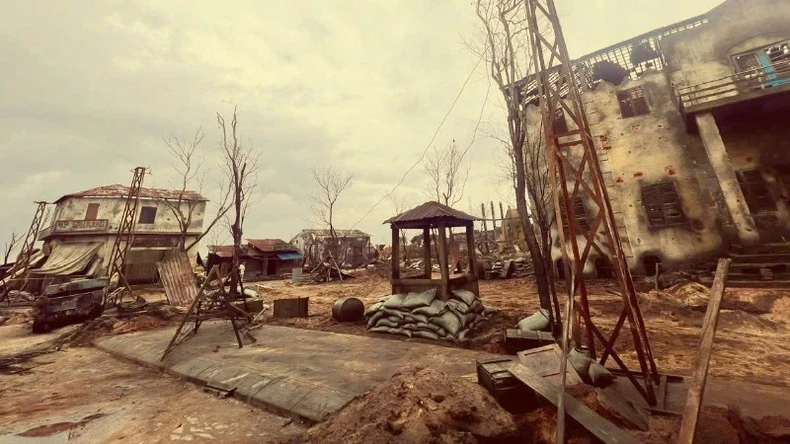
The film "Red Rain" recreates a heroic and sacred period in the country's history, the film crew must be careful in building the story, setting, and character images so as not to distort or cause misunderstandings about historical events. In addition, the harsh weather conditions in Quang Tri, with rain and sunshine, greatly affect the construction and setting process. Some filming locations are historical relics that need to be carefully preserved. Therefore, the film crew must comply with strict protection measures, limit heavy equipment or strong impacts to avoid affecting the relics.
These advantages and difficulties are part of the process of perfecting "Red Rain", helping the film convey the right spirit and honor the sacrifices of people in Vietnamese history.
Source


![[Photo] Many young people patiently lined up under the hot sun to receive a special supplement from Nhan Dan Newspaper.](https://vphoto.vietnam.vn/thumb/1200x675/vietnam/resource/IMAGE/2025/5/18/6f19d322f9364f0ebb6fbfe9377842d3)




![[Photo] Ready for the top competitions of Vietnamese table tennis](https://vphoto.vietnam.vn/thumb/1200x675/vietnam/resource/IMAGE/2025/5/18/9c547c497c5a4ade8f98c8e7d44f5a41)
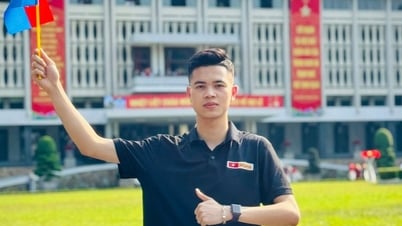


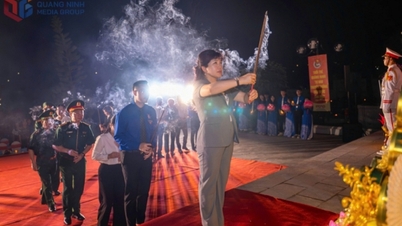





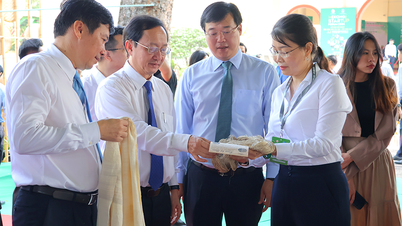
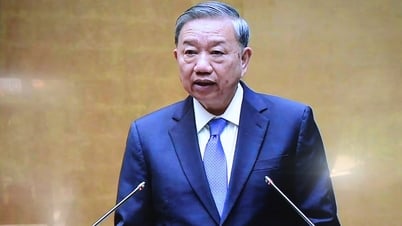
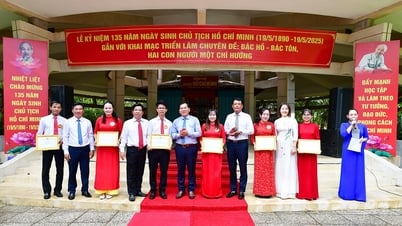

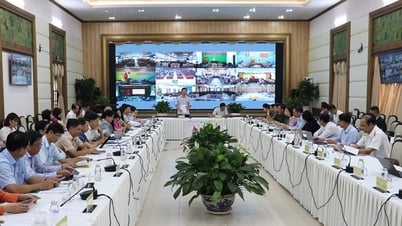






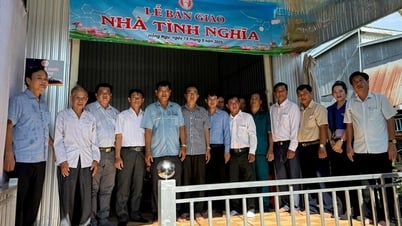
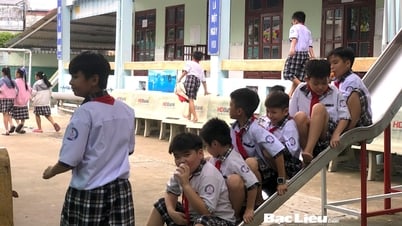

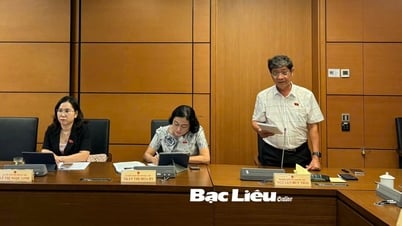
![[Photo] General Secretary To Lam visits exhibition of achievements in private economic development](https://vphoto.vietnam.vn/thumb/1200x675/vietnam/resource/IMAGE/2025/5/18/1809dc545f214a86911fe2d2d0fde2e8)













































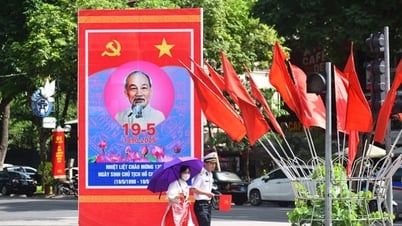

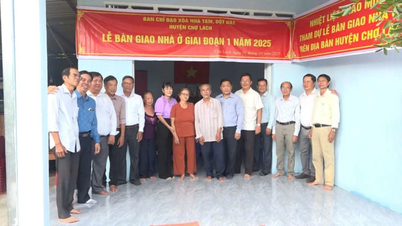

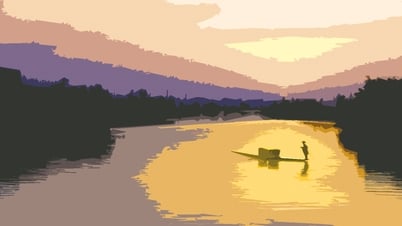

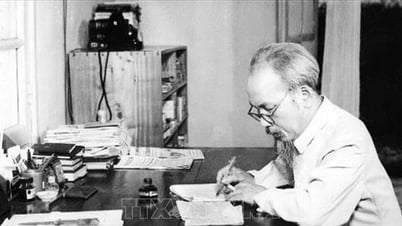

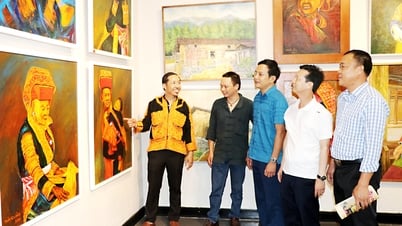
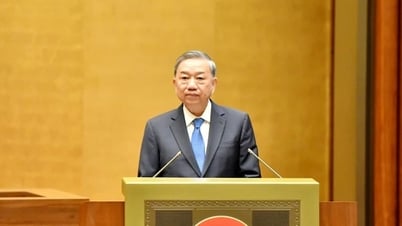








Comment (0)